第5章
The above discussion has made it clear that the original of movement is in the parts on the right.Now every continuous whole, one part of which is moved while the other remains at rest must, in order to be able to move as a whole while one part stands still, have in the place where both parts have opposed movements some common part which connects the moving parts with one another.Further in this common part the original of the motion (and similarly of the absence of motion) of each of the parts must lie.
Clearly then if any of the opposite pairs of parts (right and left, that is, superior and inferior, before and behind) have a movement of their own, each of them has for common original of its movements the juncture of the parts in question.
Now before and behind are not distinctions relatively to that which sets up its own motion, because in nature nothing has a movement backwards, nor has a moving animal any division whereby it may make a change of position towards its front or back; but right and left, superior and inferior are so distinguished.Accordingly, all animals which progress by the use of distinct members have these members distinguished not by the differences of before and behind, but only of the remaining two pairs; the prior difference dividing these members into right and left (a difference which must appear as soon as you have division into two), and the other difference appearing of necessity where there is division into four.
Since then these two pairs, the superior and inferior and the right and left, are linked to one another by the same common original (by which I mean that which controls their movement), and further, everything which is intended to make a movement in each such part properly must have the original cause of all the said movements arranged in a certain definite position relatively to the distances from it of the originals of the movements of the individual members (and these centres of the individual parts are in pairs arranged coordinately or diagonally, and the common centre is the original from which the animal's movements of right and left, and similarly of superior and inferior, start); each animal must have this original at a point where it is equally or nearly equally related to each of the centres in the four parts described.